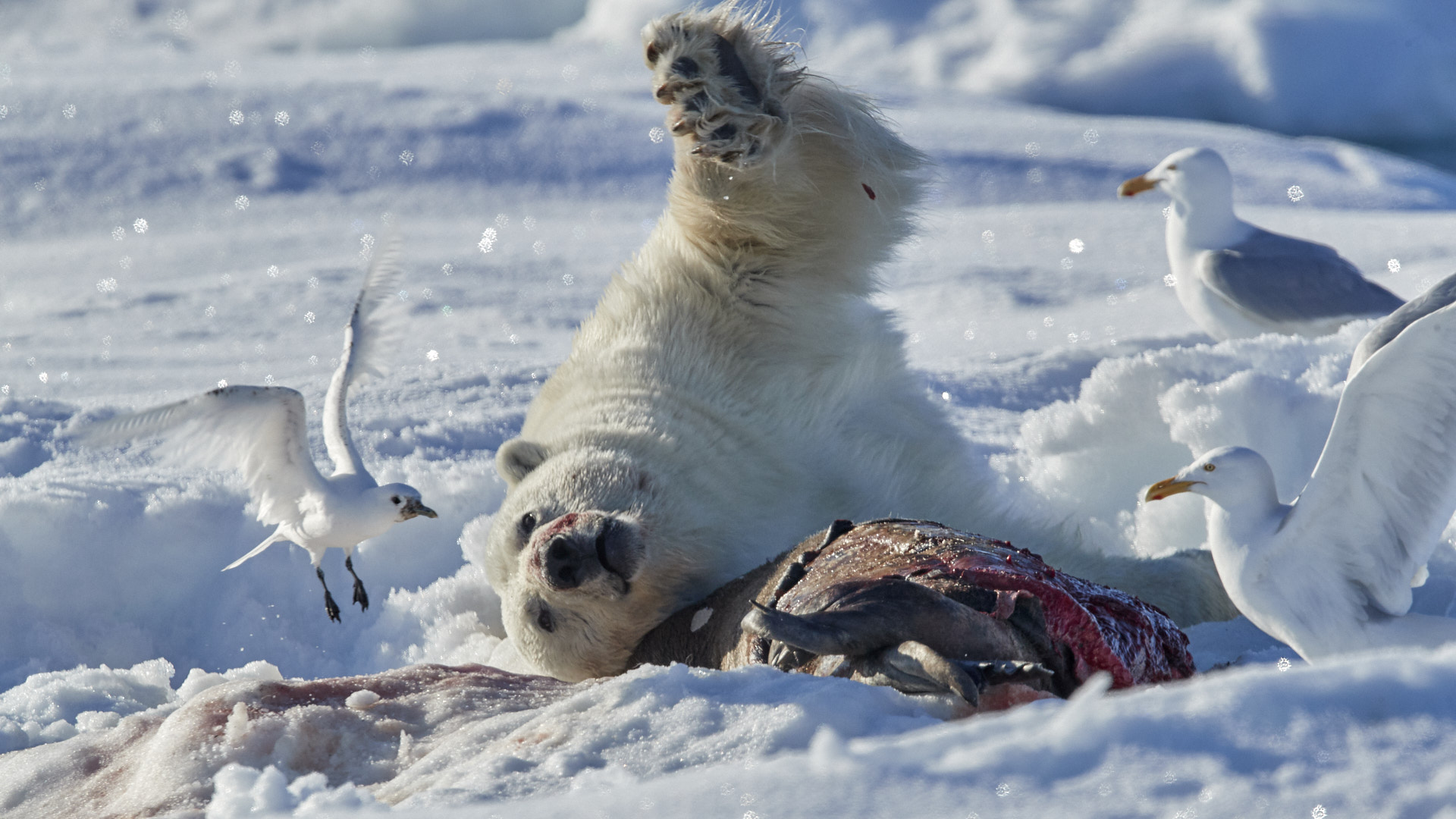
In many of the identification guides and textbooks, polar bears are considered sea mammals. Even their scientific name, Ursus marinus, means bear of the sea and yet they are the most specialized and remarkable animals with fantastic adaptations to living on the ice. Really a more suitable name would have been Ice Bear and a scientific name to match, “Ursus glacies”. Their whole biology and their future existence depend on ice.
Of course, they are camouflaged with a white coat and this coat has incredibly long guard hairs to keep them warm and they also carry a layer of fat that can be 11cm thick. There is a great story told by the polar biologist, Ian Stirling, about how scientists tried to find bears using heat sensing cameras but they totally failed and were astounded when they discovered the bears only give-off heat through their nose and mouth. This means that Polar Bears are more than happy being in the frozen polar desert and suffer more from over-heating more than the cold, when they run or being exposed on a sunny day. Ice is their habitat – they need it to find seals, their main prey and almost everything they do – well almost everything – requires ice.

It is this one characteristic that makes me speculate that polar bears could be on the very brink of being wiped out in parts of their distribution. There are 26,000 bears remaining, the IUCN lists them as vulnerable and the current expectation with climate change is there will be about 9,000 fewer by 2050. My opinion, as a biologist is that there could be many fewer. Let me explain…

Female mating biology
Just as seabirds can spend all their adolescence at sea and most of the year far from shore, the polar bear must return to land to make a snow hole and breed. They are tied to the land since they need to dig deep snow caverns where they can rear their baby cubs to a size that will allow her to return to the ice and hunt seals.
The biology behind this reproduction is truly fascinating. Polar bears are solitary – they can’t predict where the ice is going to be and they can’t predict where the baby seals or adult seals will be on the ice, so they don’t have a regular home range but wander many miles back and forth across the ice, using their extremely sensitive nose to just get a whiff of seal, that they can try and kill. Since mothers keep their cubs with them, and provide rich milk for two and a half years, only 1 in 3 of the adult females are available for mating every spring. In March and April, the males start looking for these females out on the ice, wandering 60km a day in the hope of finding some footprints of a female. He is so focused on the female that he will often go weeks without food. He seems to recognize a female ready for mating as soon as he smells her footprints – maybe there is a smell from her urine or even scent glands on the feet – and once he smells her footprints he is off – moving fast across the ice to find her.
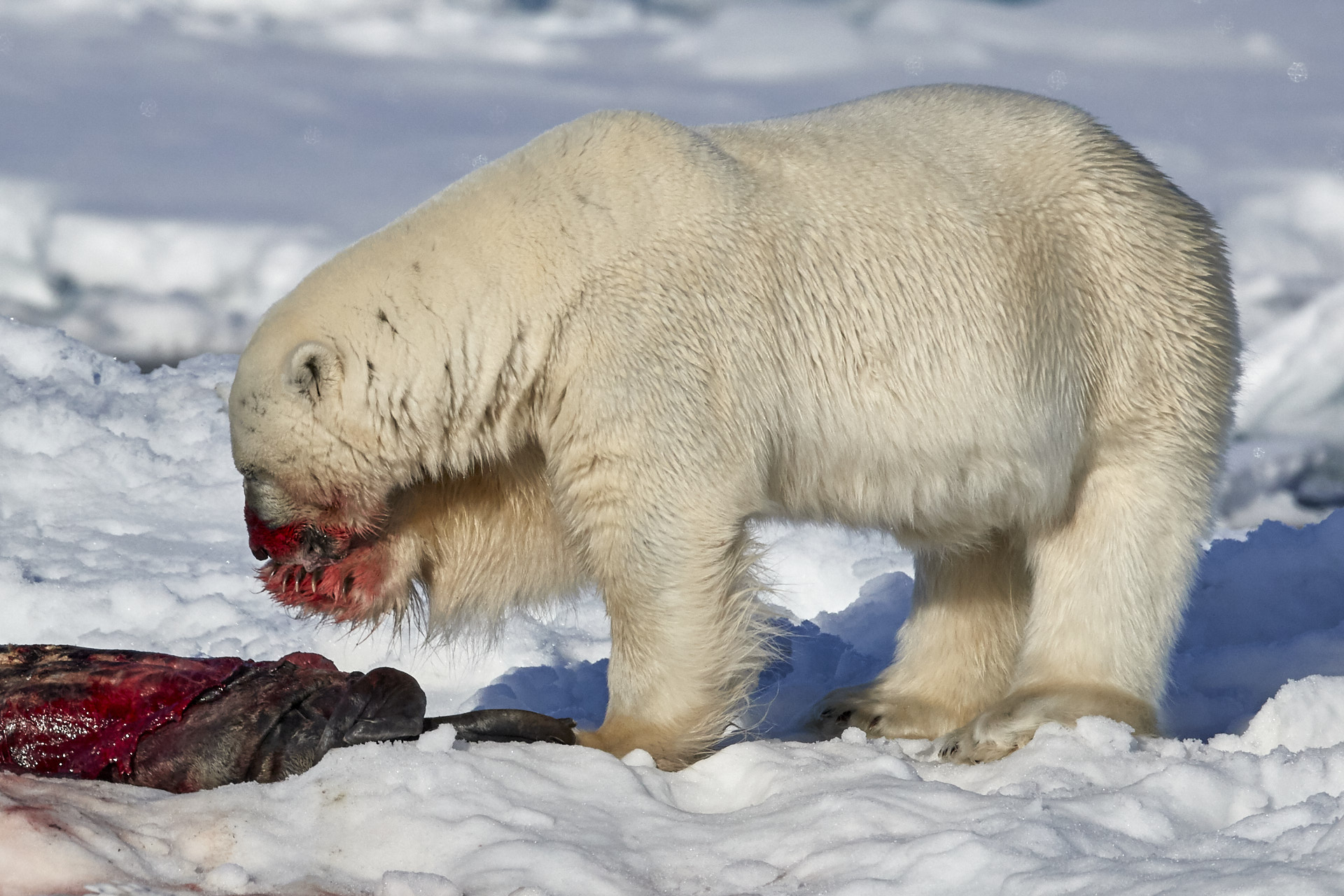
Of course, the female does not know if and when a male is going to turn up and if he is good enough to father her offspring, so she doesn’t come into season like most mammals but exhibits what we call induced ovulation. When the male finds her, he consorts with her for days, chasing and playing and trying to get close to her and this courtship behavior induces the female to ovulate so he can then mate with her and father her offspring. That is assuming no other male has turned up. Other males are on the prowl for females and invariably turn up and then there will be massive battles between the males for dominance. The bears really fight hard and they often have bad scars and most of them have damaged canine teeth. The males are often twice the size of females, sometimes three times bigger and this sexual dimorphism is without question associated with the fact that big males are more successful at winning females. To become this big, the males must be good hunters and so it is proof to the females that he is a good quality dad and these characteristics will help her offspring become great bears one day.
During mating, the egg is fertilized but these early embryos, known as blastocysts, don’t embed in the uterus wall but remain there in a dormant state until October. This is another adaptation for the polar breeding known as delayed implantation, since this then gives the female the summer to get her reserves together before she heads off for 6 to 8 months without food or water into her snow den. Quite a few species of mammal exhibit delayed implantation including the marsupials like kangaroos and koalas and also some of the mustelid species like badgers and skunks and also roe deer and armadillos. After mating and before heading off to the den, the female can increase her weight 4-fold, going from about 100kg to as much as 400kg. I suspect, but cat find evidence to support this contention, that if she doesn’t do very well during this period she will simply abort and try to get enough reserves to see her through the long winter months.

Off to the den and the birth of the cubs
Polar bears don’t hibernate and during the dark cold winter, the males and the mothers with cubs stay out on the ice, trying to catch seals in the darkness and the icy wind. The pregnant females move away from the sea ice by the end of October and then set off to find a suitable snow drift in which she can make a den. Remember, the high arctic is a polar desert and there really isn’t that much snow so she must find a location on the leeward side of a mountain where the snow blows over and falls into deep drifts. These special slopes can be as much as 40 km from the ice and there are so few that it is not unusual to have 12 or more dens in one big snow field. Sadly, with climate change, many of these special denning areas no longer get the depth of snow the mothers need. They often return to areas that they used the year before, and I suspect the females may have a fair idea where their own mothers raised them.
The mothers dig an entrance and then burrow uphill a couple of meters before making their chamber – this means that the warm air from her body stays in the chamber and doesn’t leak out of the entrance. The expectation is that more snow will fall and drift that can both block the entrance and provide more insulation for her and her cubs.
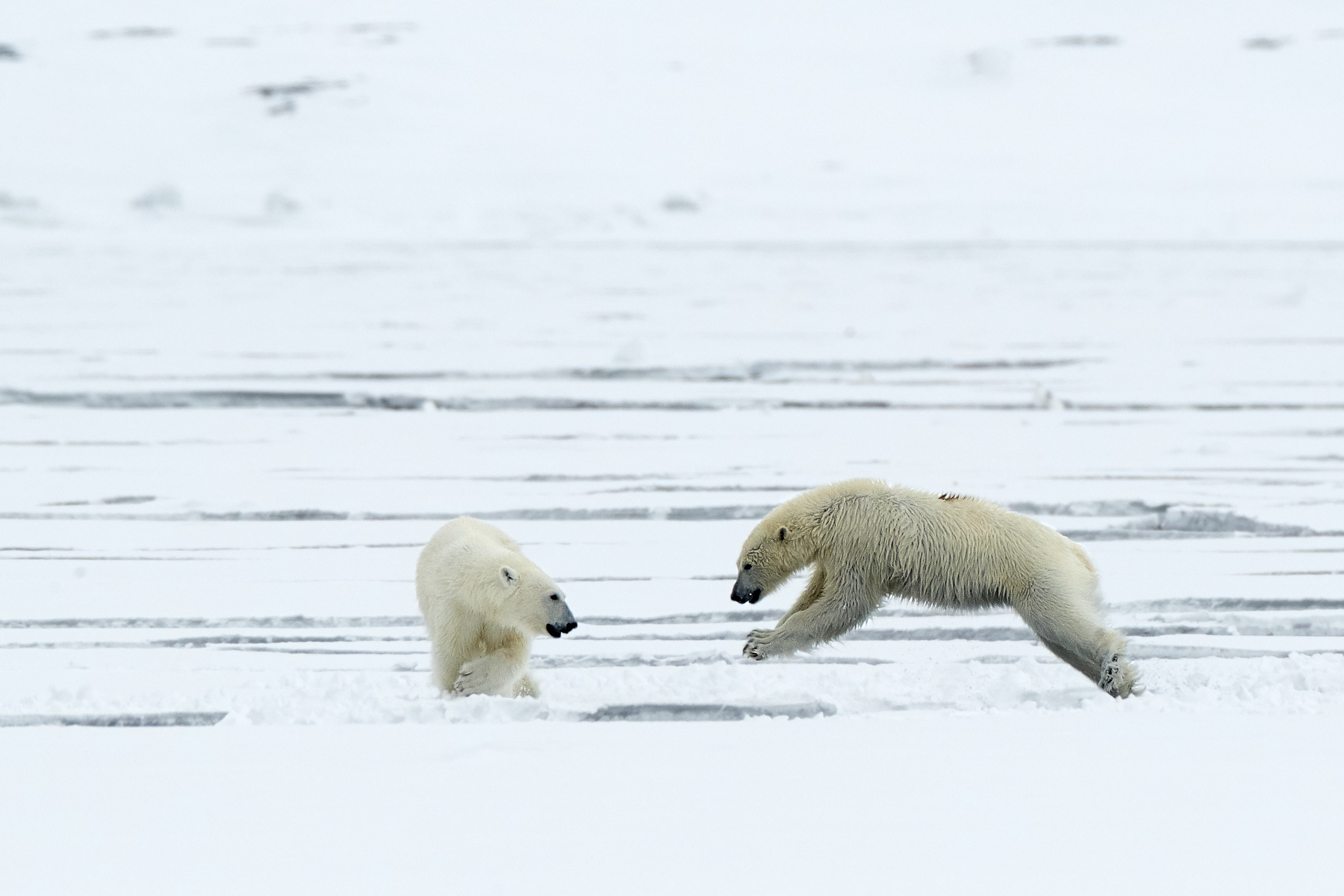
She settles down into her den in November and gives birth just a few week later in December producing two or three cubs, that are tiny. They weigh about 800 grams – hundreds of times smaller than she is, and she stays with them in the den until April. Once again, the polar bear exhibits phenomenal physiological adaptation. Why does she have the cubs when they are so small? During her time in the den she doesn’t feed or drink water and must survive on her fat reserves she acquired the previous summer. While the cubs are in the womb, she must process both their waste and her own. To provide them with energy from her fat she needs to use glucose as an oxidizing agent, and she derives this from her own body protein. This places huge strain on her condition and she gets around this problem by having the babies when they are very small and then she can feed them outside her body where she doesn’t have to process their waste. Once born the cubs can be given the fatty acids via the milk and she doesn’t have to do this at the cost of her own body protein. When she emerges from the den six or more months later, she is in bad shape and needs to get food for herself and to keep producing the nutritious milk for the cubs.
This is a hazardous journey – not only can she be many kilometers from the coast, but she must also reach the sea ice where she can hunt and catch seal cubs and adults to recover.
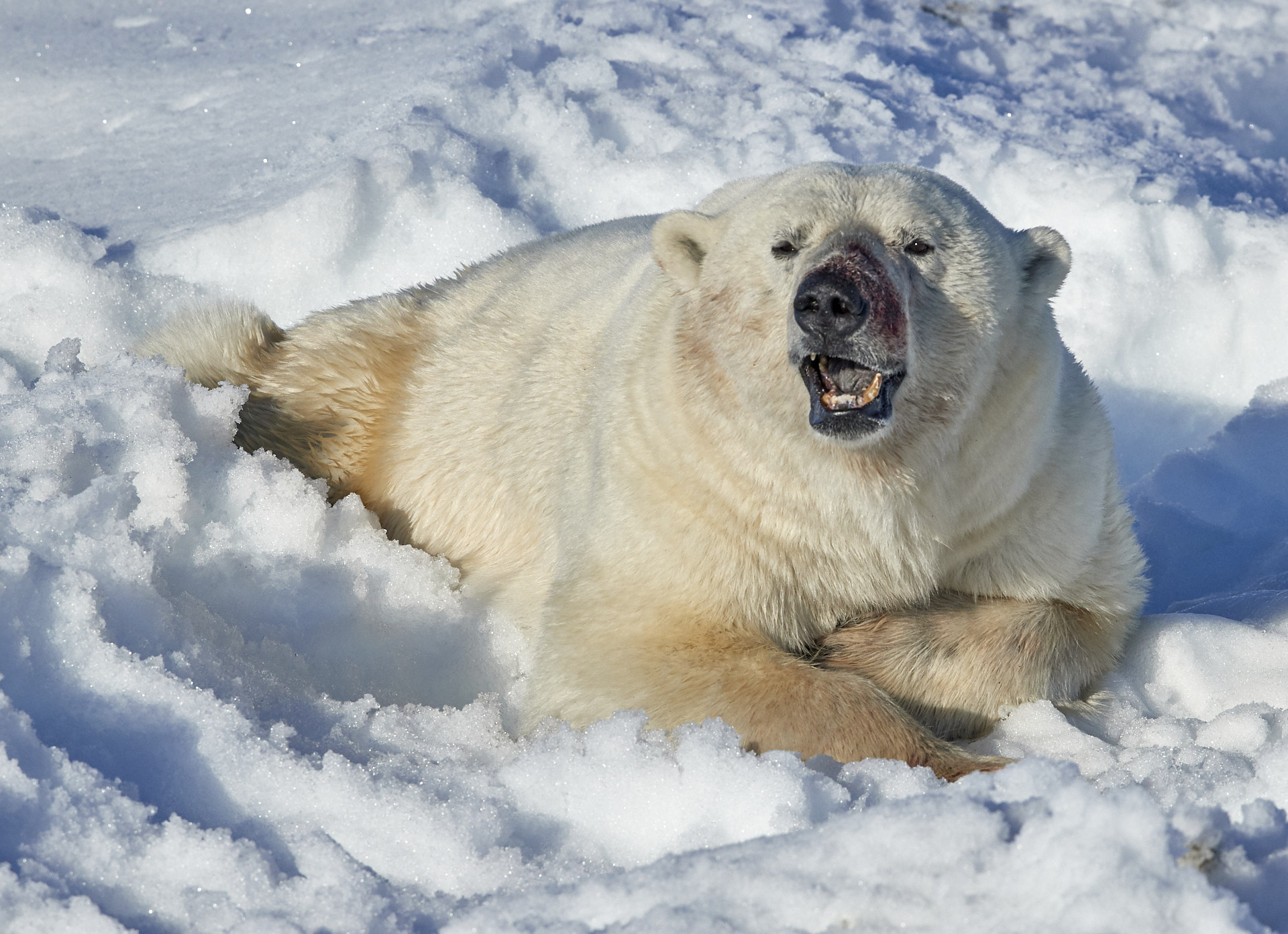
Climate change and the Polar bear dilemma
This is the central issue the polar bear faces – can she get her cubs to the ice, so she can hunt and feed them?
Let me lay out the issues:
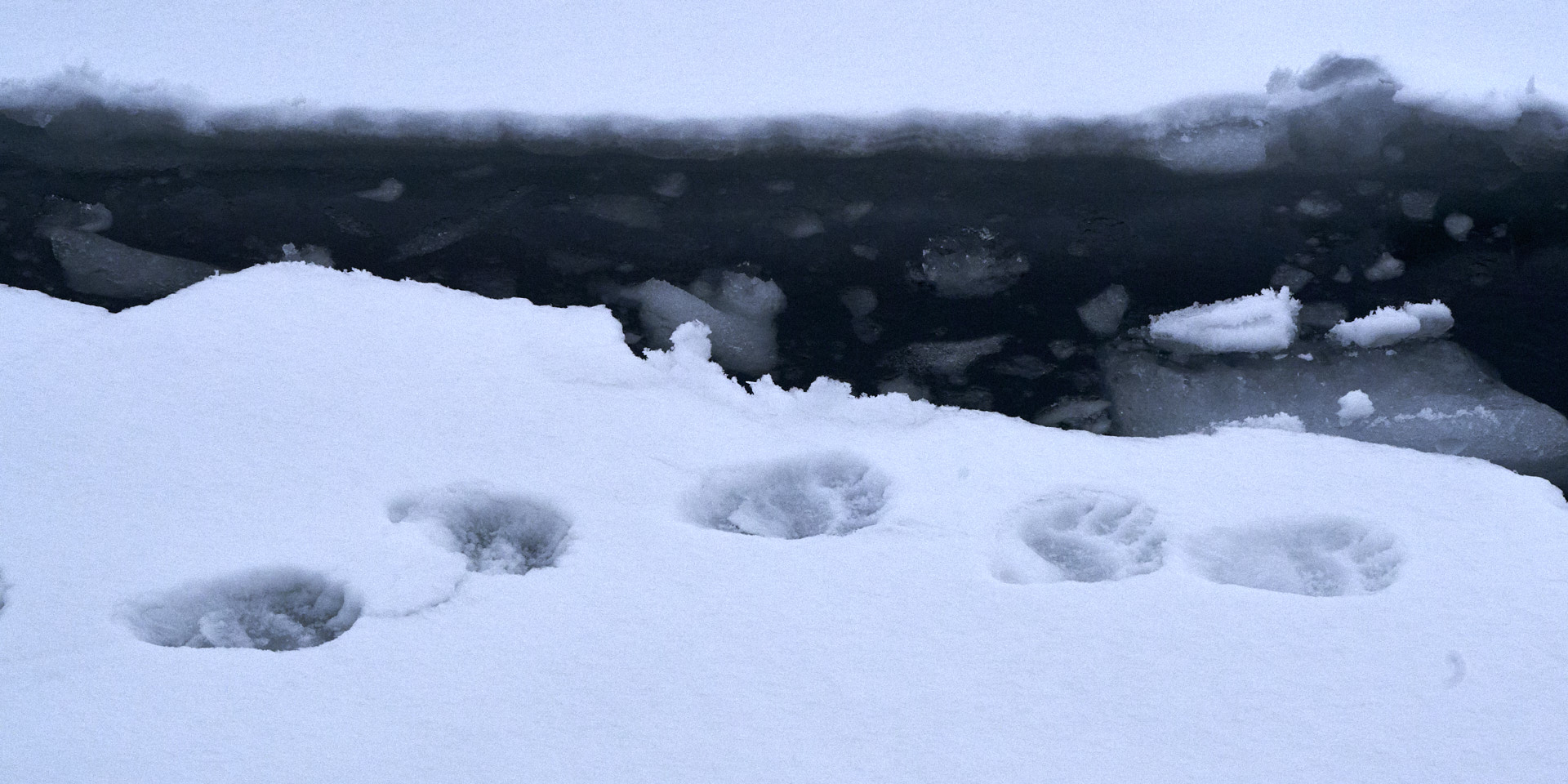
In the scenario of climate change and the continual shrinkage of the ice, there is only one outcome – the polar bears get to a point where the mothers can’t get from the dens to the ice. At this juncture we reach a tipping point – what scientists call a bifurcation – breeding production of polar bears ceases at this location and we end up with a population of ageing adults and no young polar bears being recruited into the population. We will see populations like Svalbard’s population die relatively fast. This is not a slow process – we just reach the tipping point, and these populations get wiped out.
Work with us and become climate aware. Take on actions to reduce your own impact on climate change. Vote in elections for the candidates that will do something about climate change and vote with your wallet in what you buy and your way of life.
